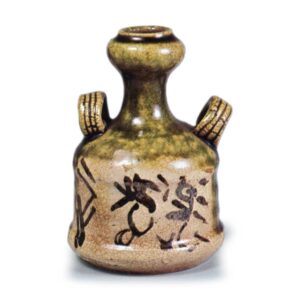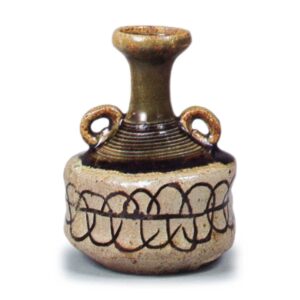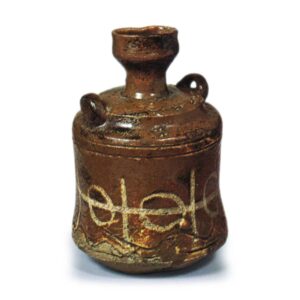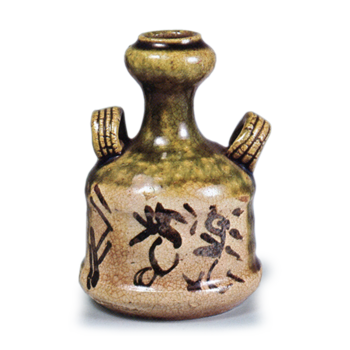


These pieces are used today as furisode among tea masters, but it is not clear whether they were originally made for oil or for oil quantity. Figure 132 has a Kagome pattern on the reverse side and an interesting painting on the front side, which could be a flower or a bird. The flat bottom of Fig. 132 still shows the traces of thread cutting. Figure 133 has a looped linkage pattern on the body, and the flat bottom is also cut with a thread cutter. Figure 134 has a line engraving with a scraped off glaze and a wavy pattern on the bottom. It is fired to a brownish-brown glaze commonly known as kaki-oribe.



